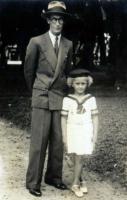Literary avant-gardes: their characteristics, authors and most important works
The literary avant-gardes are the set of movements developed within literature during the first half of the 20th century, which seek renewal and freedom of expression. Avant-garde literature, especially through poetry, reacts against values, earlier aesthetic productions, and literary tradition.
The word avant-garde comes from the French term avant-garde, a word from the military field, which highlights the innovative and provocative nature of these new trends, both in the field of art and in literature.
There are seven literary avant-gardes: Cubism, Futurism, Expressionism, Creationism, Dadaism, Ultraism and Surrealism.
Broadly speaking, we can highlight that the general characteristics of avant-garde literature are:
- Freedom of expression: avant-garde writers innovate and experiment through their works, which serve as a way to express themselves freely and break with what is established by tradition.
- Opposition to the reproduction of reality: the authors do not intend to reflect reality but to create a new one, with its own value and not through similarity.
- Poetic transformation and experimentation: I refuse logic and sentimentality. The avant-gardes experiment with forms and establish word or literary games associating them in an arbitrary and irrational way. The use of metaphors and images, the suppression of rhyme and syntactic links, the absence of punctuation marks and typographic experimentation predominate.
- The manifestos and literary magazines: the avant-garde authors make use of the manifestos and literary magazines, publications where they could express their positions clearly and publish their creations.
1. Cubism
Literary cubism arises from the influence of pictorial cubism, which began in 1907 with painters such as Pablo Picasso and Georges Banque.
In literature, the term cubism refers to the type of works from the early twentieth century that integrate the visual as part of poetic doing, challenging the limits of literature. Like Cubist painting, he included texts and fonts within his literary creations.
The poet and novelist Guillaume Apollinaire is the representative of this trend in literature, whose main manifestation is shown in poetry. Some of the defining characteristics of literary cubism are typographic experimentation and the breakdown of traditional metric schemes.
Typographic experimentation
Calligrams are the main expressions of cubism in literature. These writings, generally poetic, are based on graphic decomposition in order to form a figure or image, usually referring to the theme of the poem. This is the case of the previous poem by Guillaume Apollinaire, where an attempt is made to graphically reproduce what the poem specifies.

Breakdown of traditional metric schemes
He dispenses with punctuation and traditional meter, rhyme and grammar. The words come together in search of forming a visual whole that impacts the reader: an image. In this sense, literary cubism starts from an idea as the center of creation. To do this, he dispenses with linguistic and spelling rules, superimposes feelings and thoughts. Likewise, differences in letter sizes are common in poems.
Main cubist author and his works
Guillaume Apollinaire (1880-1918): he was an Italian poet and novelist and the creator of the calligram. He was the forerunner of literary cubism and also the first to use the terms surrealism and surrealism.
In his poetic work, the following stand out:
- Alcohols (1913)
- Calligrams (1918)
You may also like: Cubism
2. Futurism
Futurism, as an avant-garde movement, arises from the manifesto drawn up by Fillippo Tommaso Marinetti published in 1909 in the French newspaper Le Figaro. It highlights the simultaneity of sensations of movement, exalts energy, progress, the machine and industrialization.
Futurism will be characterized mainly by originality and dynamism, the breakdown of syntax and the worship of objects as a theme.
Originality and dynamism
The futurist writer pretends to be innovative, he opposes previous literature, Marinetti proposes the emergence of a new and dynamic trend. The energy versus sentimentality and melancholy above.
One of the goals of Futurism is originality, which is why the Futurists rejected forms contrary to progress and looked for new content. It is as if the representatives themselves felt that they were already the future.
Dynamism is explained by the mobility of the modern world, marked by energy and speed. Futurist authors experience this dynamism by playing with different fonts and shapes to give the sensation of rhythm and movement.
Syntax break
Futurist literature seeks to end the syntax, the use of the verb in the infinitive to add more dynamism and importance to the action and, in some way, depersonalize the message. Also it is tried to abolish the adjectives and to give more importance to the nouns, it tries to finalize the conjunctive phrases, the points or the metric, with a unique aim: "to leave words in freedom".
Theme: worship of objects
Frequently, the theme of futurist literature revolves around objects and machines, in short, the products of the modern world, cities, automobiles and noise. In the following poem by Marinetti, called Car song, you can appreciate the adoration for what, at the time, was a modern means of transport, the automobile.
Vehement God of a race of steel,
space drunk car,
that piafas of anguish, with the bridle in the strident teeth!
O formidable forge-eyed Japanese monster,
nourished by flames and mineral oils,
hungry for horizons and sidereal prey
your heart expands in its diabolical taf-taf
and your sturdy tires swell for the dances
Let them dance on the white roads of the world.
I finally let go of your metal ties ...
Leading Futurist Author and His Works
Filippo Tommaso Marinetti (1880-1918): Italian poet and writer, he was the founder of literary futurism as a result of the publication of the Futurist manifesto of 1909, which marked a before and after, by rejecting traditional aesthetics. Marinetti was a defender of violence and participated in the Italian fascist regime.
Among his futuristic works stands out Mafarka the Futurist (1909).
You can also read: Futurism
3. Expressionism
This avant-garde movement takes place in Germany in 1910 reacting to impressionism. It first took place in painting and later in literature and other arts such as cinema. In literature it occurs in manifestations such as poetry and, especially, in narrative and theater.
This trend was, more than a movement, a way of expressing nonconformity and pessimism in the face of a decadent society. In the literary field, the following characteristics stand out:
Subjectivity
In the field of literature, expressionist authors express their dissatisfaction with society through their works. For this they move away from the objective description of reality and prioritize the expression of feelings. It focuses on the interior of the individual and the moods, which it generally evokes in an exaggerated way.
Uncomfortable topics and approaches
Expressionist literature brings out themes that until then were banned as fear, disease, sexuality, morality, madness or death, almost always bordering on the sinister and the grotesque.
This is reflected in this poem by Gottfried Benn called Beautiful youth, from his collection of poems Morgue (1912), where a violent image is created and contrasts youth and death in a grotesque way.
The mouth of a girl who had been in a reed for a long time,
it looked gnawed.
When her chest was opened, her esophagus was
leaky.
At last, woven under the diaphragm,
a nest appeared with baby rats.
One of the little sisters had died.
The others lived on the basis of liver and kidneys,
they drank cold blood and had
spent there a beautiful youth.
And fast and beautiful also came his death:
they threw them into the water all together.
His snouts, what cries they gave!
Main expressionist authors and their works
Frank Wedekind (1864-1958): German playwright who was one of the forerunners of literary expressionism that mainly excelled in the theater. Among his works are:
- The awakening of spring (1891).
- The elemental spirit (1895).
- Pandora's box (1902).
Heinrich Mann (1871-1950)He was a German writer who excelled in expressionist prose and in whose works he evidenced strong social criticism. Among his works are:
- Flutes and daggers (1905).
- The return of Hades (1911).
- The subject (1916).
- The poor (1917).
- Head (1925).
Gottfried Benn (1886-1957): German poet who moved within the expressionist movement, within which works such as:
- Morgue (1912).
- Meat (1917).
- Ruins (1916).
You may also like: Expressionism
4. Creationism
Creationism was started around the year 1916 in Paris by the Chilean poet Vicente Huidobro. This literary avant-garde establishes the writer as a craftsman who is shaping his creation, fundamentally poetic.
The main postulate of this movement can be evidenced in verses like these, belonging to Poetic Art (1948) by Huidobro:
Why do you taste the rose, oh poets!
Make it bloom in the poem.
Just for us
all things live under the sun.
The poet is a little God.
Among the main characteristics of literary creationism, the search to create a new reality and the use of the juxtaposition of images and metaphors stand out.
Creation of a "new reality"
The function of the poet is not to imitate or praise nature, but to create a new imaginary reality. The poem is an autonomous entity in which this reality is created from its verses, in it the anecdotal and the descriptive must be avoided. The poem is the object and not the theme of it. In a way, the poem does not "reveal" reality but the poem is a reality in itself.
Juxtaposition of images and metaphors
Creationist poetry is nourished by the juxtaposition of images and metaphors that the author arbitrarily relates and without any link or analogy with reality. An original vocabulary is often used and even punctuation marks are removed.
Main creationist author and his works
Vicente Huidobro (1893-1948): Chilean poet and one of the most influential avant-garde in Spanish-language literature. He spent much of his life in Europe, between Paris and Madrid. In France he was steeped in the poetic creation of Apollinaire. Vicente Huidobro is the founder of one of the most ephemeral avant-gardes, creationism, with which he would influence other poets.
Among his most outstanding works of creationism is Altazor or the parachute ride (1931).
5. Dadaism
Dadaism has its origin in 1916 from the hand of the Romanian poet Tristan Tzara and the German Hugo Ball. It arises from the premise of the uselessness of traditional art and culture.
Literary Dadaism is fundamentally developed in poetry and we can identify it by its nihilism and the use of arbitrariness and immediacy for creation.
Nihilism as a starting point
This movement accepts the loss of consciousness and starts from this. There is no sense in itself, it is something spontaneous or absurd. Dada arises from absolute denial, an anti-art, a cry of rebellion in the face of the cruel reality of the First World War.
Arbitrariness and immediacy as a creative technique
Dadaist poems have to do with the idea of spontaneity and immediacy. It consists of writing down all the words that appear in the mind and, with them, a poem is created placing the words randomly, by succession, but without trying to give a sense or meaning rational. Its particularity lies in the grammatical nonsense it expresses.
Literary Dadaism also made use of the calligram inherited from Guillaume Apollinaire.

Principal Dadaist Author and His Works
Tristan Tzara (1896-1963): Samuel Rosenstock, whose pseudonym is Tristan Tzara, was a Romanian poet and a key figure in literary Dadaism.
Among his Dadaist works, the following stand out:
- The first heavenly adventure of Mr. Antipirina (1916).
- Twenty five poems (1918).
- The approximate man (1931).
You may also like: Dadaism
6. Ultraism
Ultraism is a movement that occurred in Spain in 1918 as opposed to modernism, which prevailed in the Spanish poetry of the late nineteenth century and that grouped Spanish authors and Hispanic Americans.
Ultraism is closely linked to creationism and also to futurism. Among the main characteristics of this movement, Jorge Luis Borges highlighted in 1921 the elimination of the unnecessary and the use of images and metaphors as a poetic axis.
Elimination of "unnecessary" elements
The writers try to abandon the ornamentation and the elements that are used in order to astonish the reader. To do this, they break the usual syntactic forms and the traditional order.
The ultraist author avoids links and conjunctions, and punctuation is usually replaced or suppressed in poems. Instead, blank spaces or staggered verses are used. The arrangement of the word has an expressive purpose.
This can be seen in the following Borges poem entitled Villages and published in Prisma magazine in 1921.
The west standing like an Archangel
tyrannized the trail
Loneliness full like a dream
has settled around the town
The shears collect the sadness
scattered from the evenings the new moon
it's a little voice under the sky
She according to her is getting dark
the town is once again a field
Images and metaphors as the axis of poetry
Ultraist poetry seeks to revalue the image and is built on metaphors. It is the result of the combination of several images, that is, by superimposing them, the poem results.
Main author and ultraist works
Jorge Luis Borges (1899-1986): he was an Argentine writer and poet. Between 1914 and 1921 he settled in Europe, where he was influenced by the avant-gardes and participated in ultraism.
One of his poetic works most marked by this trend is Fervor of Buenos Aires (1923).
You may also like: Short story El Aleph by Jorge Luis Borges
7. Surrealism
Surrealism is the most important of the literary avant-gardes and emerged in 1924 from the hand of André Breton and with the publication of the First surreal manifesto (1924).
This avant-garde current, following Sigmund Freud, creator of psychoanalysis, seeks to automate the psyche, as stated Breton: “It is a dictation of thought with the absence of any control exercised by reason, regardless of any aesthetic or moral".
It is characterized by the exteriorization of the psyche, automatic writing and a great use of images and metaphors.
The externalization of the human psyche
This current claims the subconscious and the dream without the mediating participation of reason. Likewise, the authors of surrealist literature remain indifferent to aesthetic and moral concerns.
Automatic writing
This is something that was also used in Dadaism. To let consciousness flow, surrealist authors make use of the automatic writing technique, which allows the flow of the consciousness and offers as a result a creation that emerges from the unconscious without being carried away by any type of thought that "judges" the creation.
This can be seen in the following fragment of André Bretón's poem entitled World in a kiss.
The musician with hazel drumsticks sewn into the sleeves
Appease a swarm of young lion monkeys
Who came down with a crash from the ledge
Everything becomes opaque I watch the night float go by
Dragged by the axolotls of blue shoes
Use of images and metaphors
The creations result in dream images through sensory metaphors. It is characteristic of surrealist poetry the comparison of a real term and a figurative one.
Main Surrealist Authors and Works
André Breton (1896-1966)- French writer who participated in the Dada movement and was the mentor of French Surrealism. He founded the magazine Littérature in 1919, one of the most influential of its time. André Breton published both Surreal manifests, the first in 1924 and the second in 1930.
Among his works are:
- Magnetic fields (1920).
- Nadja (1928).
- The crazy love (1937).
Louis Aragon (1897-1982): He was a French novelist and poet who participated in Dadaism and later in Surrealism thanks to the influence of André Breton. He was one of the first authors to participate in literary surrealism.
Among his surreal creations are:
- Fire of joy (1920).
- Perpetual motion (1926).
Philippe Soupault (1897-1990): He was a French writer, also linked to politics, who was one of the promoters of Dadaism and, later, began in Surrealism, from which he was later expelled.
Among his poetic creations are:
- Magnetic fields (1920, book written with André Breton).
- The rose of the winds (1920).
If you liked this article, you may also be interested in:
- Avant-garde
- Literary trends
- 15 avant-garde poems
- Generation of 27



